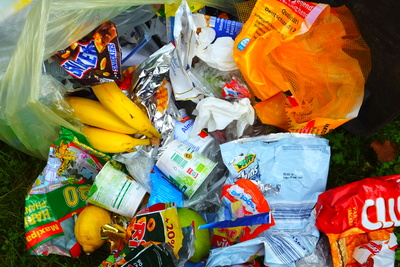According to Future Market Insights the report shows that retail waste segment of the market is estimated to expand at comparatively lower CAGR, related to other waste type segments during the assessment period (2017-2027). The report also highlights the factors influencing growth of the market. Wherein, factors such as waste produced by agricultural processes, diary food processing waste, poultry and meat processing waste as well as increasing seafood processing wastes are included. The amount of waste generated by these industries is beyond imagination. These factors compelled players in the waste food management industry to improve waste food procedures.
The report further offers the factors that are challenging market players and are restricting the growth of the market to reach its highest potential as well as the factors that will support market growth. Impact analysis of these key factors are also profiled in the report. Dynamics of the market on the basis of various segments are also provided in the report.
Dynamics of Market
According to the report published by Future Market Insights (FMI), food processing waste, by waste generation type is anticipated to retain its dominance by securing US$ 35 Bn by 2027-end, riding on high single-digit CAGR throughout the assessment period. In terms of volume, the consumption of food processing waste segment is likely to reach 182 Mn tonnes by the end of assessment period, with 5.1% growth rate. Whereas, the consumption waste segment is projected to reach US$ 30 Bn by the end of assessment period. Further, this segment will reach 139 Mn tonnes by 2027-end and it is estimated to increase at 4.4% CAGR throughout the assessment period. The segment is projected to expand at value CAGR of single-digit throughout the forecast period.
In terms revenues, both the consumption waste and food processing waste segment is likely to dominate the global food waste management market throughout the forecast period. By the end of 2017, the consumption segment is likely to procure over one-third share of the market whereas, the food processing waste segment will hold nearly two-fifth market share. Moreover, by 2027-end, the consumption waste segment is likely to lose 90 basis points and food processing waste segment will grow by 210 basis points. The food production waste segment is anticipated to witness low CAGR and will procure only 9% market share, in terms of value.
Regulations Governing Management of Food Waste
The generation of waste food in generally observed in developed economies, according to the report. An independent survey states that almost 85% to 90% of the total waste food is generated by developed counties. Majority of the waste food is generated through supply chain including, processors, transportation & logistics, retailers and distributors.
The National solid waste policy in Brazil concentrating on rising the sustainability of solid waste management and minimizing total wastage volume generated at national level. The policy includes the sectors such as construction, healthcare, forestry, transportation, industrial, public, mining and domestic.
The Macon-Bibb commission has governed a rule to privatize definite waste management services for yard waste and garbage within the city limits of the US.
In Europe, the waste management legislation made it compulsory for service providers, retail sectors and food manufacturers to develop food waste recycling and disposal without affecting the environment. In addition, the stringent rules laid by governments have governed the effective management of waste food and disposal of it.
Competitive Landscape
Several leading market players operating in the market are profiled in the report such as Givaudan S.A, International Flavors & Fragrances Inc., Symrise AG, Firmenich SA, Takasago International Corporation, Sensient Technologies Corporation, Robertet S, Frutarom Industries Ltd., International Taste Solutions Ltd., S H Kelkar and Company Limited, Dohler GmbH, Archer Daniels Midland Company, Blue Pacific Flavors, Jean Gazignaire S.A., Fona International, Inc., Fleurchem Inc., Abelei Inc., Comax Flavors, Mane SA, Teawolf Inc. It is expected that these companies will have major contribution in market growth.










